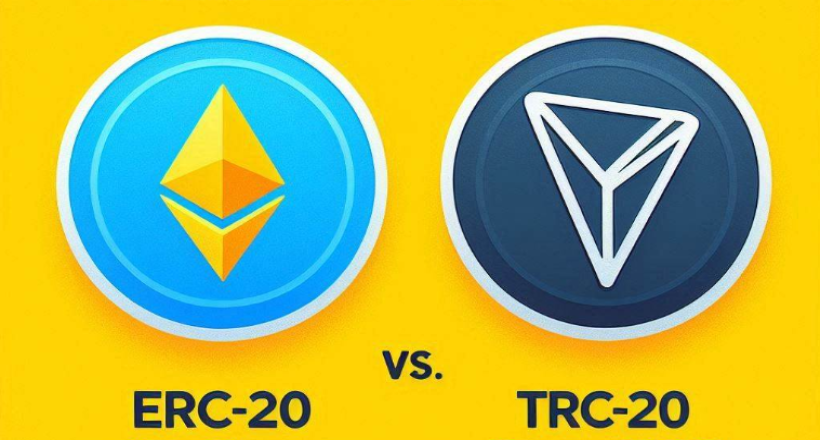
Tether (USDT) is one of the most well-known stablecoins,
pegged to the value of the US dollar and recognized as a stable digital
currency in the cryptocurrency market. Tether is issued on multiple blockchain
networks, including TRC20 and ERC20. This article examines the differences
between TRC20 Tether and ERC20 Tether, evaluating the advantages and
disadvantages of each.
ERC20 Tether: A Deeper Look into the Most Popular Ethereum Token Standard
ERC20 Tether is one of the most recognized and widely used types of Tether in the cryptocurrency market. This type of Tether is built on the Ethereum network, the second largest and most popular blockchain in the world. The ERC20 standard is a framework used to create and manage tokens on this network, and ERC20 Tether adheres to this standard. The Ethereum network, due to its robust structure and high security, is very suitable for holding digital assets, including Tether.
Because of the high security and stability of the Ethereum network, ERC20 Tether is very suitable for transferring significant amounts of digital currency. The ERC20 standard is recognized as a global standard for creating tokens, and many cryptocurrency projects use it. One notable aspect of ERC20 Tether is its relatively high transaction fees. These fees are due to the congestion of the Ethereum network and its Proof of Work (PoW) consensus mechanism. ERC20 Tether wallet addresses typically start with numbers and the letter "x." Despite facing challenges and criticisms throughout its lifespan, ERC20 Tether remains one of the primary stablecoins in the market.
TRC20 Tether: Speed and Low Fees, Suitable for Small Transactions
TRC20 Tether is a type of Tether cryptocurrency built on the Tron blockchain network. Tron is a popular blockchain platform that allows users to create their decentralized applications (dApps). TRC20 Tether follows the TRC20 token standard, enabling it to be transferred quickly and at a low cost on the Tron network.
One of the biggest advantages of TRC20 Tether is its very high transaction speed and very low fees. These features make TRC20 Tether very suitable for small and frequent transactions. The Tron network uses a Proof of Stake (PoS) consensus mechanism, which provides high security. Tron is recognized as a suitable platform for developing decentralized applications.
Comprehensive Comparison of TRC20 and ERC20
Consensus Mechanism
The first and most crucial difference between TRC20 and ERC20 is in their transaction verification methods or their consensus mechanisms. The Tron blockchain uses the Delegated Proof of Stake (DPoS) algorithm, where token holders can vote for representatives to verify transactions. This method brings high speed and scalability to the Tron network. On the other hand, the Ethereum blockchain uses the Proof of Stake (PoS) algorithm, where token holders can lock their assets to gain the right to verify transactions. This method generally provides higher security compared to DPoS.
Transaction Speed and Fees
Another significant difference between TRC20 and ERC20 is in the transaction speed and fees. Due to the use of the DPoS algorithm, the Tron blockchain can process a large number of transactions per second, while maintaining very low transaction fees. In contrast, the Ethereum blockchain, due to its high popularity and increased demand, has seen a significant increase in transaction fees, and the speed of processing transactions is lower compared to Tron.
Wallet and Exchange Support
As an older and more popular standard, ERC20 enjoys broader support in various wallets and exchanges. Many hardware and software wallets, including MetaMask, Trust, and Ledger, support ERC20 tokens. In contrast, support for TRC20 tokens in wallets and exchanges is more limited but gradually increasing.
Choosing Between ERC20 and TRC20 Tether
The choice between TRC20 and ERC20 depends on various factors, including your priorities. If speed and low fees are more important to you, TRC20 is a suitable option. However, if you prefer broader support and higher security, ERC20 will be a better choice. Ultimately, the most important thing to remember is that both TRC20 and ERC20 standards have their own advantages and disadvantages, and the best option depends on your individual needs and circumstances.